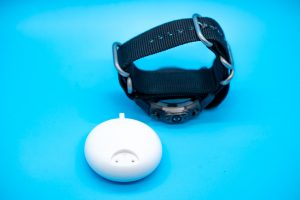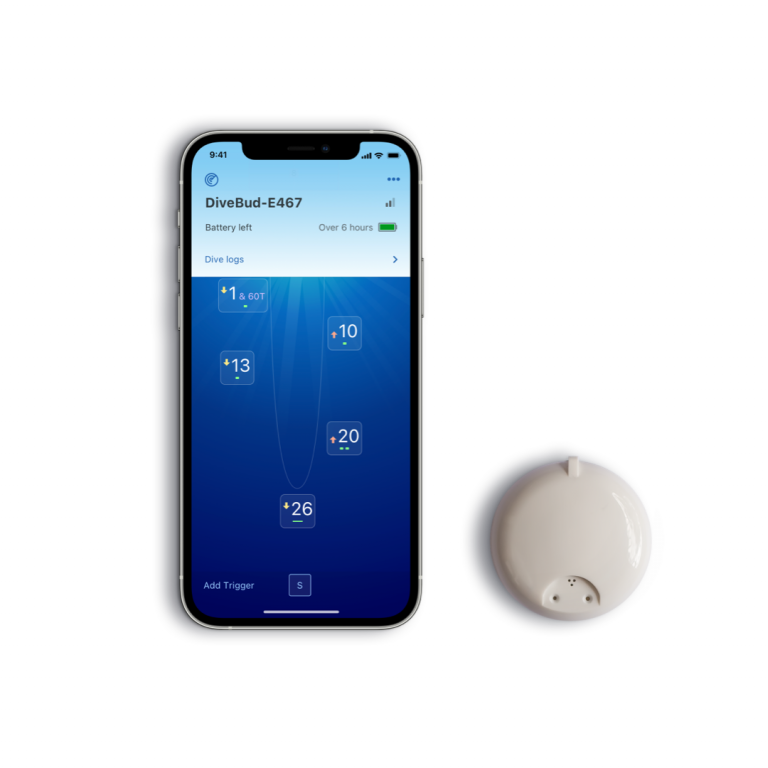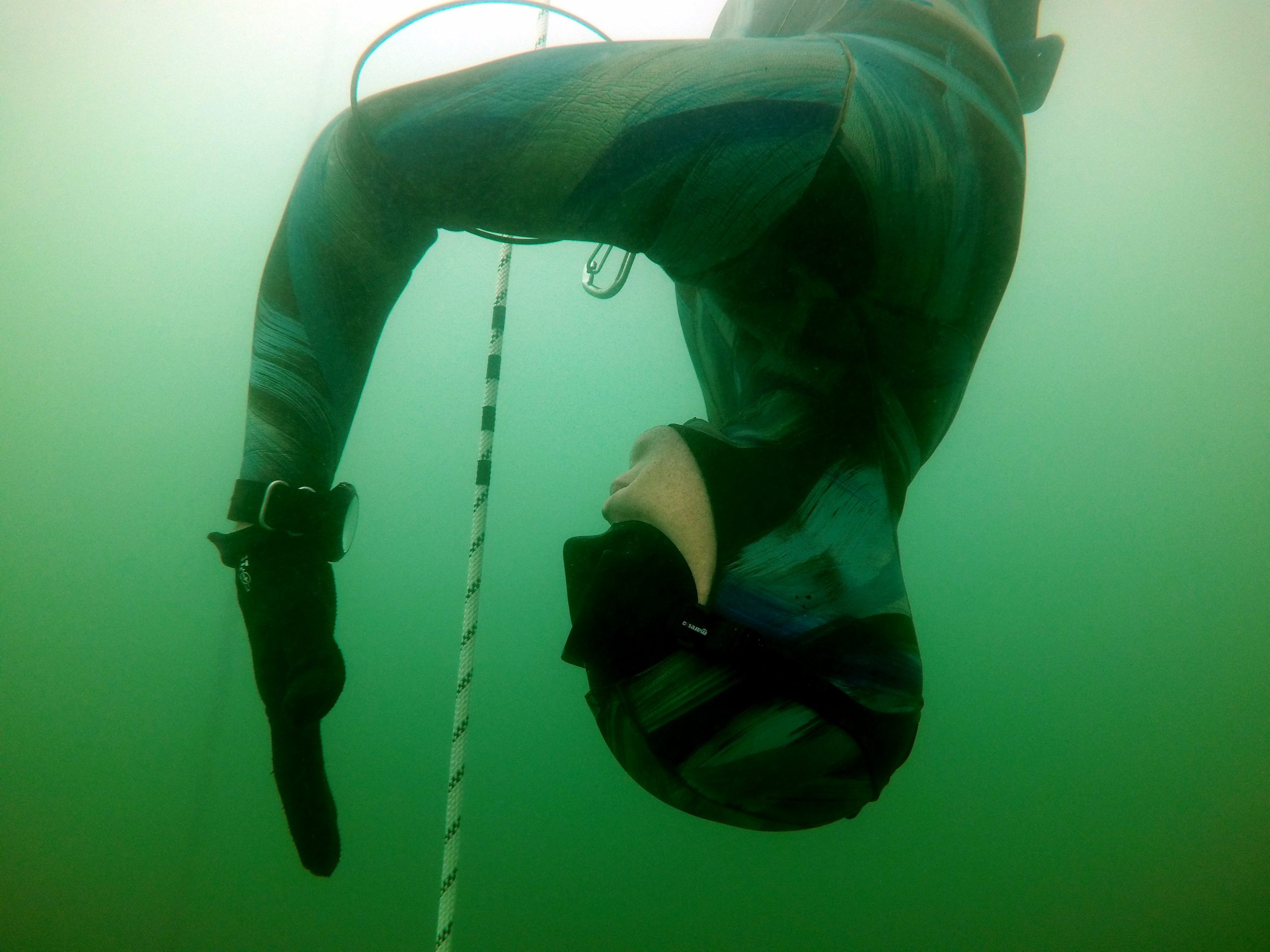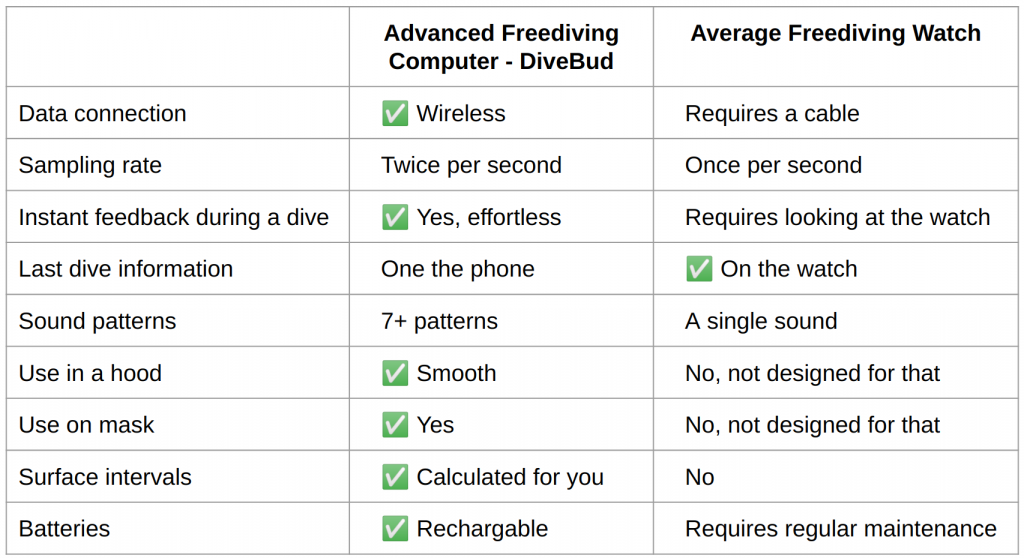The majority of contemporary diving computers with freediving functions are designed in the form of watches. Is this form of design the best for freedivers? What is the difference between freediving computer DiveBud and conventional freediving watches? Below we discuss these questions.
Originally, diving computers were invented to avoid decompression sickness. The very first version of the analogue diving computer was somewhat bulky, but in 1976 the digital freediving computer already had the form of a rather large watch. It would show the scuba diver parameters such as current depth, elapsed dive time, ascent rate, etc. On Wikipedia, you can find further information regarding the history of diving computers, but it is important to note that first diving computer had a form of watch.
Freediving watch issues

Although a watch is convenient for scuba divers, it isn’t so for freedivers. Whilst the freediver’s arms are positioned on either side of the body, it becomes difficult for the diver to hear the watch’s alarms. It is equally difficult to read the watch when visibility is limited – a phenomenon that only worsens the deeper the depth. Not every watch comes with an automatic backlight.
The act of looking at your watch during freediving is quite intrusive. To minimise drag, freedivers use a specific dive hand position. This is where the hand is placed in front of the freediver to allow watch readability (see the picture). Although this manoeuvre reduces the drag, because the watch’s surface is still rotated, the information is nevertheless difficult to read.
When freediving with our arms placed side by side with our body, the alarms become too distant to hear, affecting their reliability and recognisability, especially when we are affected by nitrogen narcosis or in free fall deep relaxation.

A freediver also needs to consider decompression sickness. The best way to avoid it is to follow AIDA’s recommendation on surface intervals. Sadly, not many conventional freediving watches have surface intervals notifications.
Freedivng computer DiveBud
To solve all these problems we created a new freediving computer. Freediving computer DiveBud makes use of sound rather than relying on vision. DiveBud has both time and depth based alarms specifically designed for freedivers. A variety of different alarm types and sound patterns enables efficient communication. Following the best recommendations from AIDA, DiveBud notifies the freediver on the surface interval. DiveBud’s smooth and round shape makes it perfect to use inside the hood. Alternatively, it can be attached to your mask’s strap with a special clip.

DiveBud samples your depth twice per second with great precision. We followed the principle that your data belongs to you, so your dive logs can easily be accessed on your phone. Also, you can share them in a convenient format with your friends at any time. Because DiveBud does not have HR monitor it is allowed by AIDA rules to be used during freediving competitions.

Freediving computers comparison summary
So watch is still important instrument as it gives you feedback after the diving. And below is the comparison between a usual freediving watch and freediving computer DiveBud.


